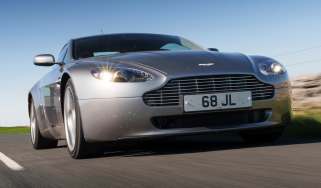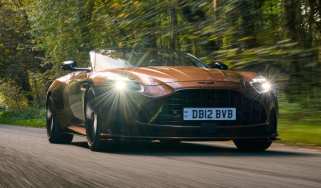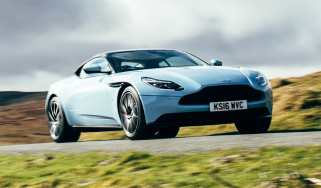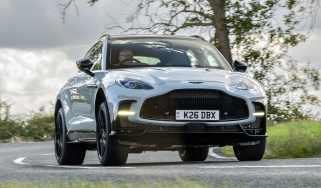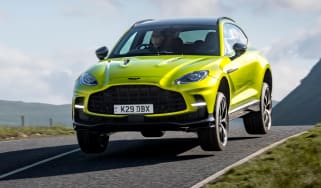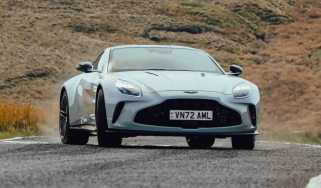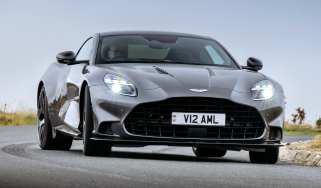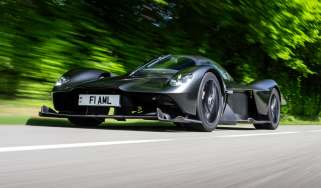Aston Martin Vantage (2006) Fast Fleet test – living with a £30k V8 Aston

Aston Martin Vantage (2006) Fast Fleet test – living with a £30k V8 Aston
When a car is as special as the V8 Vantage, it deserves a few special routines
Aston Martin Vantage safety car driven – the road car F1 cars can't overtake

Aston Martin Vantage safety car driven – the road car F1 cars can't overtake
One of the most filmed road cars in the world is the F1 safety car, James Taylor drives the Aston Martin Vantage that currently leaded the F1 grid

Best Aston Martins – from brutes in suits to howling hypercars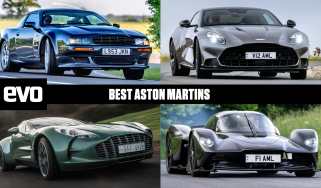

Best Aston Martins – from brutes in suits to howling hypercars
Aston Martins often trade heavily on emotion, but there are a few that are revered by the evo team that are as beautiful to drive as they are to look …
Aston Martin Vanquish (Mk1, 2001 - 2007): Britain's answer to the Ferrari 550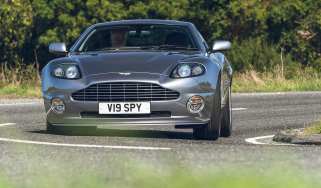

Aston Martin Vanquish (Mk1, 2001 - 2007): Britain's answer to the Ferrari 550
One of the most significant of all Astons, the Mk1 Vanquish remains a brilliantly enjoyable driver’s car and an affordable one too
Aston Martin DB12 Volante v Maserati GranCabrio Trofeo – open-top GTs go head-to-head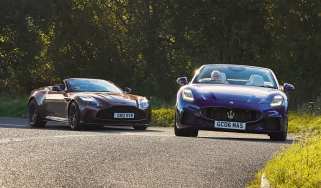

Aston Martin DB12 Volante v Maserati GranCabrio Trofeo – open-top GTs go head-to-head
Maserati GranCabrio Trofeo or Aston Martin DB12 Volante? Two powerful and charismatic convertibles, but which is best? A cross-country drive to t…
New Aston Martin DB12 S is a tightened grand tourer riposte to the Ferrari Amalfi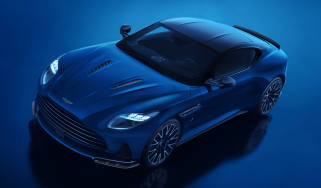

New Aston Martin DB12 S is a tightened grand tourer riposte to the Ferrari Amalfi
Tweaks under the more aggressive skin could make the new DB12 S the core grand tourer Aston needs
Aston Martin DBX707 Fast Fleet test – daily driving Britain’s 697bhp Cayenne fighter

Aston Martin DBX707 Fast Fleet test – daily driving Britain’s 697bhp Cayenne fighter
We’ve lived with the ‘regular’ DBX, now it’s the turn of the 697bhp 707. Will this super-SUV impress as much in daily use at it did on its launch?
Ferrari Roma Spider v Aston Martin Vantage Roadster: £200k V8 drop-tops go head-to-head

Ferrari Roma Spider v Aston Martin Vantage Roadster: £200k V8 drop-tops go head-to-head
Aston Martin’s brand new Vantage Roadster takes on Ferrari’s acclaimed Roma Spider: British muscle versus Italian flair, but which will prevail?
Aston Martin Valhalla prototype 2025 review – Fernando Alonso's 1064bhp company hypercar on the limit

Aston Martin Valhalla prototype 2025 review – Fernando Alonso's 1064bhp company hypercar on the limit
After years of development, we get behind the wheel of Aston Martin’s plug-in-hybrid mid-engined hypercar on track in prototype form
£200,000 supercar shoot-out: AMG v Aston Martin v Maserati v McLaren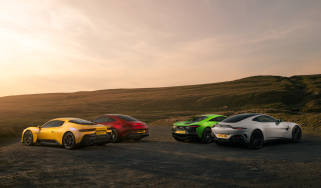

£200,000 supercar shoot-out: AMG v Aston Martin v Maserati v McLaren
Aston Martin Vantage v Maserati MC20 v McLaren Artura v Mercedes AMG GT 63 S E Performance: Four different ways to spend circa £200k, but which is the…
This Aston Martin Restomod is named after a Skoda for some reason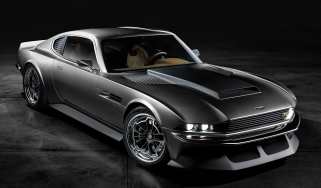

This Aston Martin Restomod is named after a Skoda for some reason
The Ringbrothers Octavia might sound like a Skoda saloon that’s received a V8 heart transplant in time for SEMA, but it’s actually an Aston Martin…
New Aston Martin Vantage S revealed – Ferrari Amalfi rival is more powerful and focused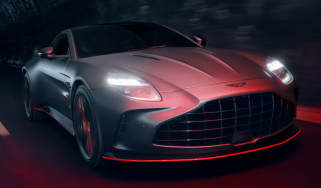

New Aston Martin Vantage S revealed – Ferrari Amalfi rival is more powerful and focused
With a bump in power output among myriad detail changes, the Vantage S could be the ultimate driver’s Aston
Who makes the best GT car? Aston Martin v Bentley v Maserati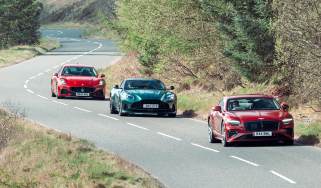

Who makes the best GT car? Aston Martin v Bentley v Maserati
We pitch the new Bentley Continental GT Speed against the 671bhp Aston Martin DB12 and the MC20-engined Maserati GranTurismo Trofeo
Driving the Aston Martin Valkyrie to Le Mans – car pictures of the week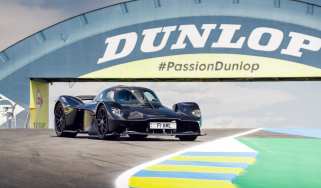

Driving the Aston Martin Valkyrie to Le Mans – car pictures of the week
Retracing the tyre tracks of the victorious 1959 Aston Martin racing team, we drive the marque’s odds-defying hypercar from Silverstone to Le Mans.
The Aston Martin Valkyrie LM will let ten lucky buyers live the Le Mans dream

The Aston Martin Valkyrie LM will let ten lucky buyers live the Le Mans dream
Aston Martin will build ten examples of the Valkyrie LM, a lightly fettled, unhomologated version of its Le Mans endurance racer
Inside Aston Martin’s bold comeback plan – from CEO, Adrian Hallmark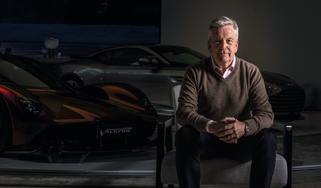

Inside Aston Martin’s bold comeback plan – from CEO, Adrian Hallmark
With a raft of new models on the way and a ‘boring’ but vital plan to sort logistics and manufacturing, Aston Martin CEO Adrian Hallmark goes for a dr…
Aston Martin Valhalla makes dynamic debut with Fernando Alonso at the wheel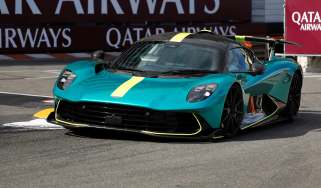

Aston Martin Valhalla makes dynamic debut with Fernando Alonso at the wheel
Aston Martin is gearing up for first deliveries of its 1064bhp, £850,000 Valhalla hypercar, teasing us with a dynamic debut in Monaco first
Aston Martin is first to adopt Apple CarPlay Ultra with system-wide software overhaul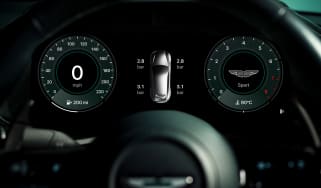

Aston Martin is first to adopt Apple CarPlay Ultra with system-wide software overhaul
Aston Martin’s lineup will receive Apple’s long-awaited CarPlay Ultra as standard, bringing a new look and improved functionality to the range
The 717bhp Aston Martin DBX S is the start of a new Porsche-fighting era

The 717bhp Aston Martin DBX S is the start of a new Porsche-fighting era
The beginning of a big derivative push throughout the Aston Martin range, the DBX S adds extra attitude and performance to Aston’s super SUV
Upgraded Aston Martin DB12 spied with Ferrari California-style stacked exhaust set-up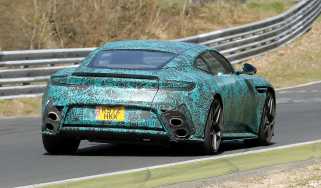

Upgraded Aston Martin DB12 spied with Ferrari California-style stacked exhaust set-up
Aston Martin is preparing a hopped-up version of its DB12 super GT, with more power expected and some striking styling upgrades confirmed.
New Aston Martin Vanquish Volante revealed – more expensive, better looking than Ferrari’s 12 Cilindri Spider

New Aston Martin Vanquish Volante revealed – more expensive, better looking than Ferrari’s 12 Cilindri Spider
New Vanquish Volante completes Aston Martin’s range rejuvenation of its front-engined cars ahead of the mid-engined Valhalla launch in autumn 2025.
